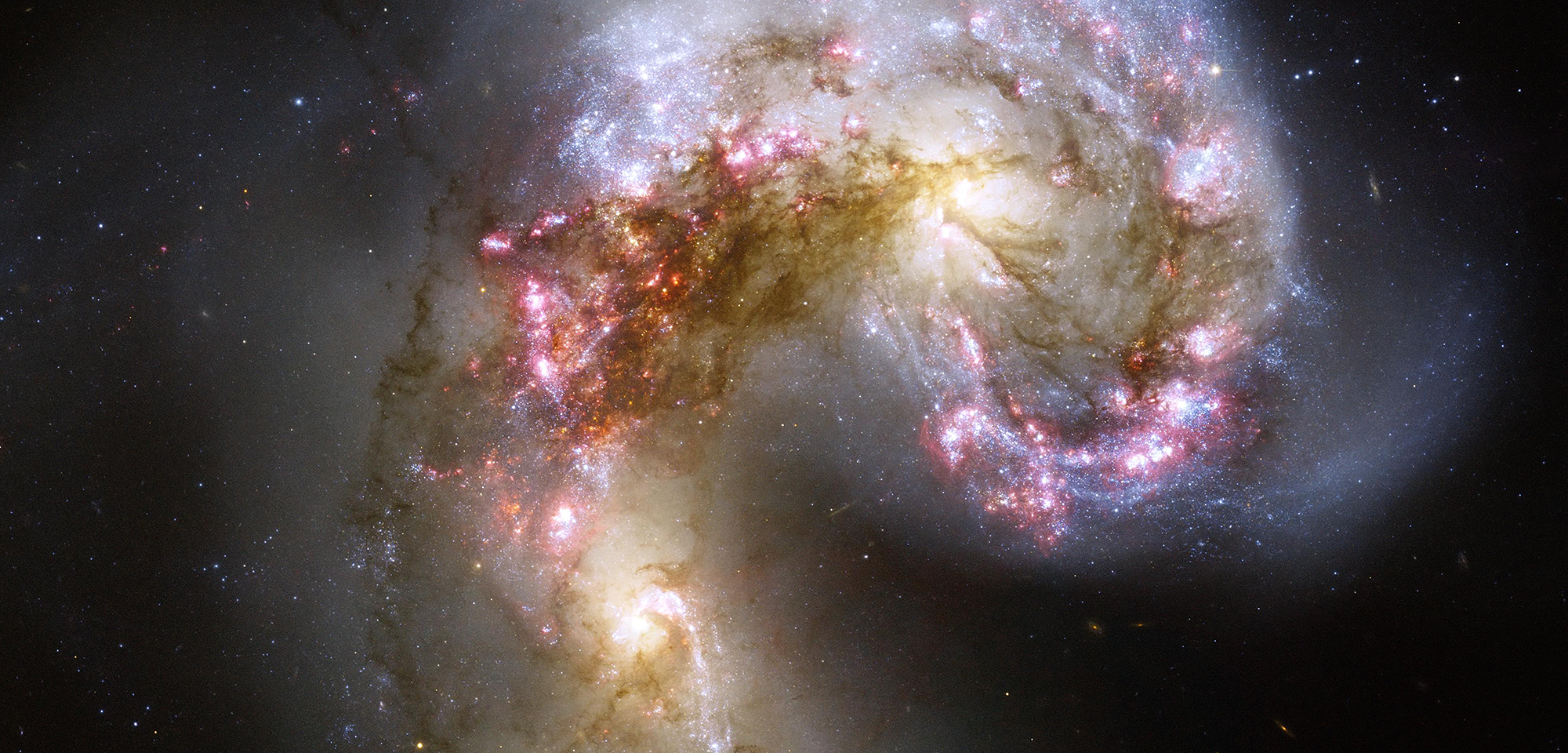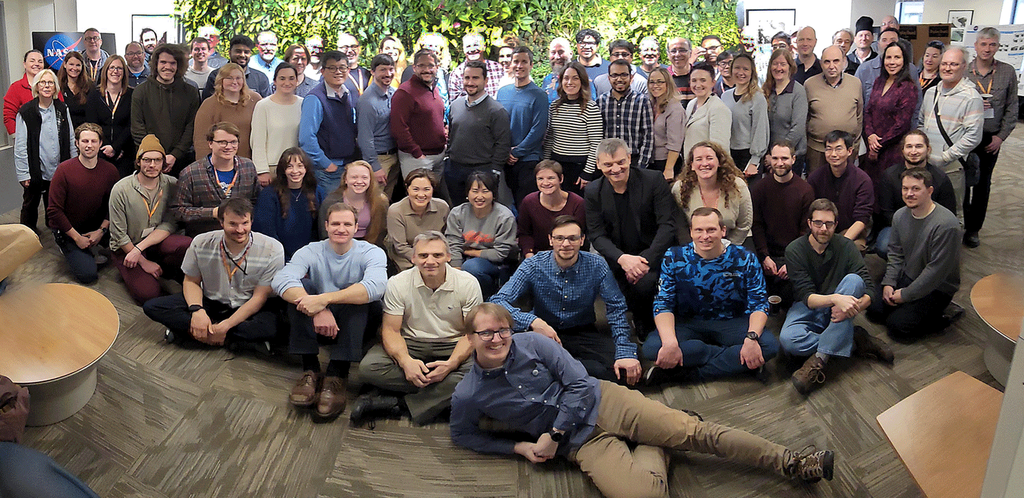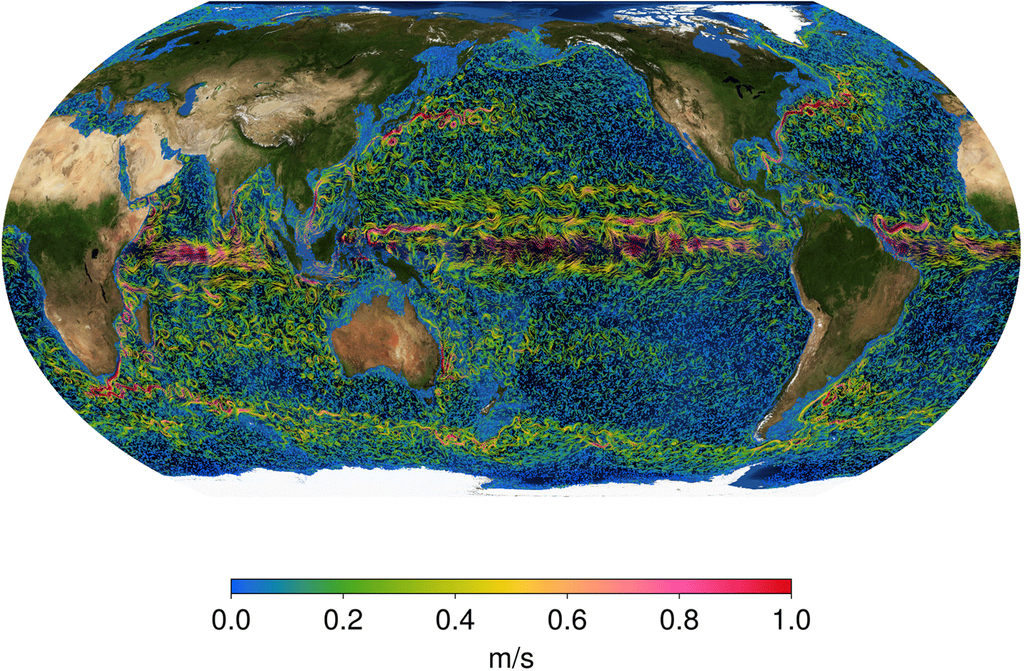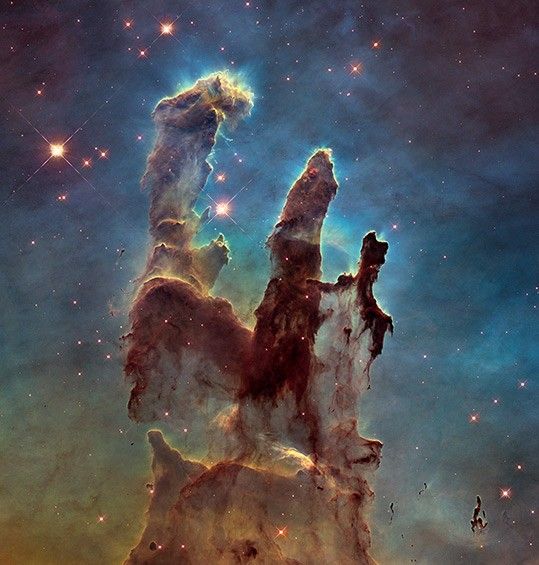1 min read
Antennae Galaxies

This celestial firestorm is the blazing wreckage of a collision between two spiral galaxies. The two galaxies, whose bright yellow cores appear to the lower left and upper right of center, began their fateful confrontation a few hundred million years ago. Formally known as NGC 4038 and NGC 4039, the pair is nicknamed the Antennae Galaxies because of two long streamers of stars, gas, and dust that extend from the crash site. Wide-field images reveal the elongated “antennae" formed during the initial impact, but this Hubble image concentrates on the heart of the galactic collision.
The cosmic smashup has pulled dark dust into long strands stretching from one galaxy to the other. It has also compressed huge clouds of gas and dust, igniting a rash of new star formation within the galaxies. Clusters of young stars sparkle in blue, while pinkish star-forming nebulae are churning out even more stars. Astronomers estimate that billions of new stars will form as the two galaxies complete their collision and eventually merge into one galaxy.
Hubble's view of the Antennae is the sharpest taken to date, allowing astronomers to study these galaxies and their newly forming star clusters in unprecedented detail. Using Hubble to investigate the Antennae, Brad Whitmore of the Space Telescope Science Institute and his colleagues found that the merging galaxies contain more than a thousand young "super star clusters." They believe many of these clusters will eventually disperse, but the largest ones will survive to become giant, spherical-shaped stellar groupings called globular clusters, like those that reside in the outskirts of our own galaxy. Most globular clusters contain ancient stars and were thought to be relics of a galaxy's earliest days, but Hubble's observations suggest that globular clusters can also be born more recently from galactic mergers.
About 65 million light-years away, the Antennae Galaxies make up one of the closest pairs of colliding galaxies to us. Because many (if not all) present-day, large galaxies are thought to have grown from smaller galaxies that collided and merged, studying nearby collisions such as the Antennae Galaxies helps astronomers understand how galaxies evolved over the universe's history. It might even provide insight into our own spiral galaxy's future collision with the large, spiral Andromeda Galaxy.
Constellation: Corvus
Distance: 62 million light-years (19 Megaparsecs)
Instrument: Advanced Camera for Surveys/WFC
Image Filters: F435W (B), F550M (y), F658N (H-alpha+[N II]), F814W (I)
Share
Details
Claire Andreoli
NASA’s Goddard Space Flight Center
Greenbelt, Maryland
claire.andreoli@nasa.gov



































